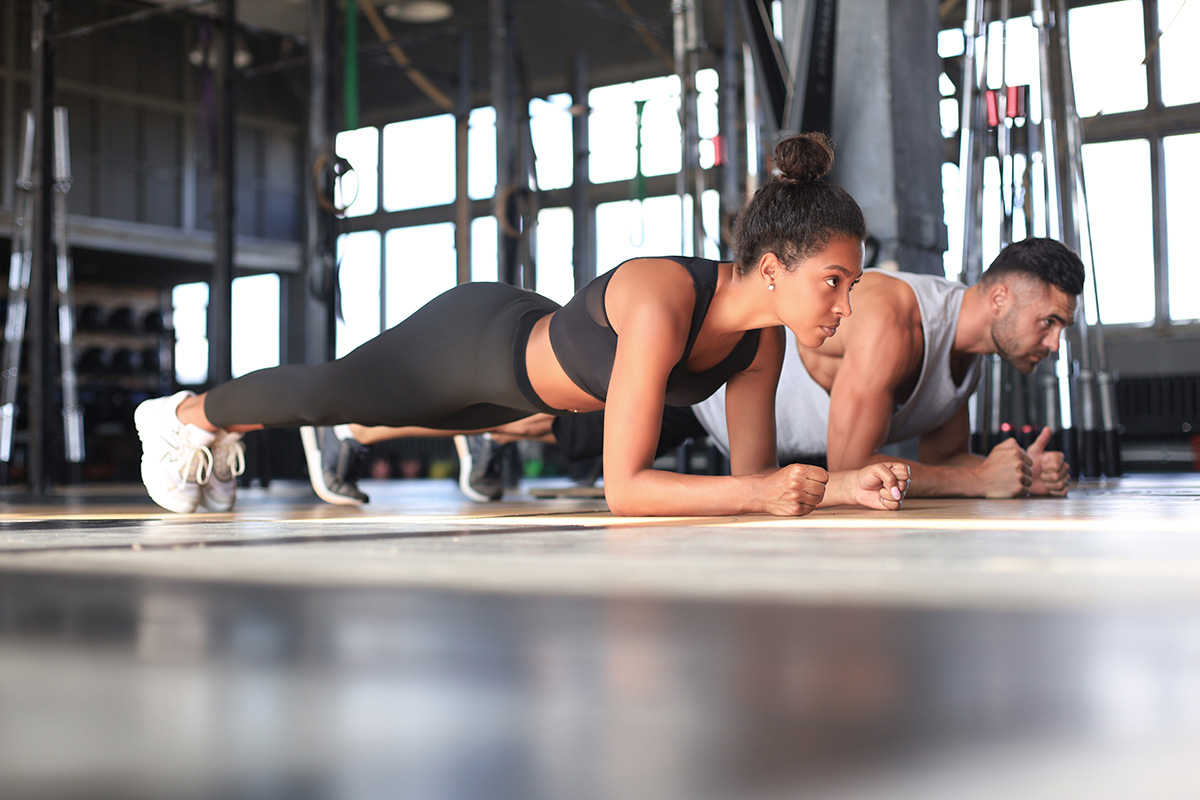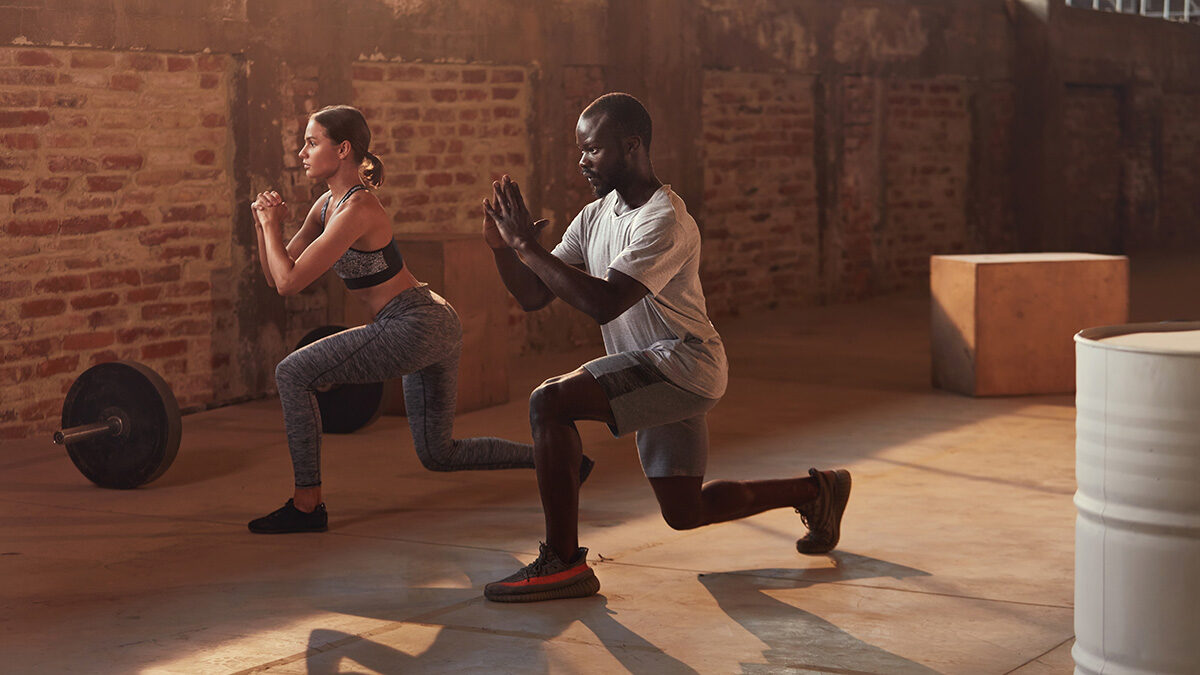Why You Should Incorporate Isometric Exercises into Your Gym Routine

If you’re on a mission to get stronger, leaner and fitter, it’s easy to believe that the fastest way is to lift heavy weights and push yourself through intense cardio sessions.
But there’s a growing school of thought that suggests that including static exercises into our regular routine could help us reach our fitness goals more efficiently than simply energetically throwing ourselves around the gym.
Known as ‘isometric exercises,’ these motionless strength training movements might not look as explosive as box jumps or burpees, but over time, they can help you to build solid muscular endurance. Here’s what you need to know.

What are isometric exercises?
Isometric exercises are a type of strength training exercise where the muscle contracts and generates tension without any visible movement of the joint. Classic examples include planks, wall sits, static lunges, and holding yoga poses.
In these heat-building positions, our muscles work hard, but there’s no bending or extending of joints involved. This sets them apart from isotonic exercises like bicep curls, where the muscles change length.
As isometric movements are all about holding your body in a fixed position, you can create resistance using just your body weight, or by holding an object, or using weighted exercise equipment. This versatility makes isometric exercises accessible to almost anyone, and makes them particularly useful for on-the-go workouts while traveling.
Isometric workouts primarily target muscle groups, like the core, legs and arms, that are responsible for maintaining a static, contracted position.
“For example, wall sits improve thigh strength, overhead holds challenge shoulder girdle endurance, and V-sits work on core stability and strength,” Karolina Wegner, trainer at F45 Surbiton explains.
She continues, “While they are not the best exercise for bulking muscle, they excel at building muscular endurance, which is your ability to sustain exercise for a prolonged period. They also promote muscular strength and establish a better mind-body connection, allowing you to engage your muscles more efficiently.”
What are the benefits?
Joint pain is one of the most common health complaints worldwide, with more than 350 million people estimated to have arthritis globally. For people who are dealing with joint issues or limited mobility, isometric exercises can be a game-changer. “These exercises strengthen muscles without joint movement, improving stability, enhancing circulation, and aiding in pain management. They’re especially useful when guided by professionals, supporting rehabilitation efforts,” Wegner notes.
As Wegner pointed out earlier, isometric exercises are also fantastic for building muscular endurance. By holding a static position for an extended period, you train your muscles to withstand fatigue, making it easier to sustain physical activities for longer durations. And while they may not lead to significant muscle size gains, movements like planks and v-sits do contribute to increased muscular strength.
Isometric exercises target specific muscle groups, honing their strength and enhancing their capacity to generate force. This makes them a valuable addition to your fitness routine, particularly if you’ve been neglecting certain muscle areas during your workouts.
From holding a plank on all fours to balancing on your glutes in a V-sit, these exercises challenge you to maintain a steady position, thereby enhancing your balance and stability. Over time, you’ll develop stronger core and stabiliser muscles, reducing the risk of injuries in various aspects of life, especially during activities that test your balance.
Like all forms of exercise, isometric workouts release endorphins, boosting your mood and reducing stress. What sets them apart is that they don’t involve intense cardiovascular activity, allowing you to enjoy these benefits without spiking your cortisol levels and risking exercise burnout.

Incorporating isometric exercises into your gym routine
“When incorporating isometric exercises into your training,” advises Wegner, “take into account your fitness goals. If your primary aim is muscle building, focus predominantly on eccentric and concentric training. Nonetheless, you can still integrate isometrics towards the end of your workout to enhance muscular endurance and strength, thus reducing the risk of injuries.” Here are her top recommendations for seamlessly including isometric exercises in your next sweat session:
Start slowly:
“Begin with basic isometric exercises to build a strong foundation.”
Maintain proper form:
“Ensure you have the correct posture and muscle engagement for each exercise.”
Progress gradually:
“Increase the intensity and duration of your isometric exercises over time.”
Listen to your body:
“If you feel pain or discomfort, stop the exercise immediately. Your safety is the most important thing.”
Consult a professional:
Seek guidance from a fitness trainer or physical therapist, especially if you’re new to isometric exercises.”
As with most fitness trends, it’s important to acknowledge that isometric exercises may not be suitable for everyone, especially people with certain medical conditions or limitations. Wegner warns, “Those with uncontrolled high blood pressure, hernias, or acute joint injuries should consult a healthcare professional before starting any exercise program. A PT or GP can help you to ascertain which types of exercise work for you.”


















